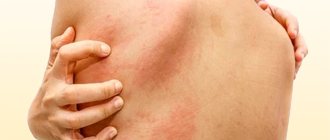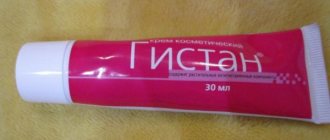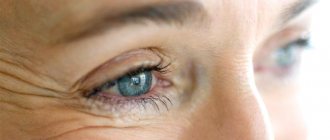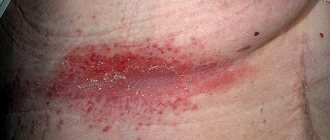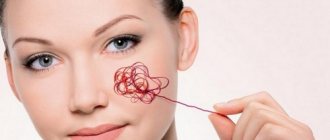Allergy medications: how do they work?
A complete review of allergy medications: their advantages and disadvantages
With the beginning of flowering, antiallergic medications become one of the most relevant seasonal medications. After watching commercials, many victims rush to the pharmacy in full confidence that the popular remedy will certainly bring them freedom from hay fever. However, in reality, everything is not so simple: antiallergic drugs vary both in the mechanism of action and in the time of onset of the effect and its strength.
Unexpected reaction
Normally, we breathe air saturated with the aromas of alder, birch, willow, maple and many other trees and plants, enjoying the smell of spring and awakening nature. However, for approximately every fifth person on earth, pollen entering the respiratory tract causes a complex cascade of pathological reactions.
This happens because the body of allergy sufferers perceives the substance that is part of pollen (antigen) as an enemy, to whom a brutal war of defeat is immediately declared. At its initial stage, special antibodies are produced - class E immunoglobulins. They must contact the antigen and neutralize it. But in fact, antibodies first attach to special, mast cells, which are very rich in the mucous membrane of the nasal cavity and respiratory tract.
When pollen antigens do bind to antibodies, mast cells are destroyed and their contents are released into the surrounding tissue: histamine and some other substances. They are the ones that cause the characteristic allergy symptoms that antiallergic drugs are designed to combat. In what ways do they achieve the desired effect?
Option one: don’t give histamine a chance
Antihistamines work on this principle. They block special H1-histamine receptors to which histamine binds, and thereby prevent its harmful effects. There are three generations of antihistamines.
To the first generation
include Diazolin, Tavegil, Suprastin, Fenkarol and many others. Their common distinguishing feature is a sedative, i.e. sedative, effect. First generation drugs, which are available in the form of injections (Suprastin and Tavegil), turn out to be indispensable in emergency situations, for example, with Quincke's edema, since they begin to act much faster than tablets.
More modern second generation
(Loratadine, Semprex, Ebastine) in recommended dosages are well tolerated without causing sedation, but may have a negative effect on the heart muscle 1 .
the third generation antihistamines are considered the most well tolerated and powerful.
- Cetirizine, Levocetirizine and Fexofenadine.
When taking antihistamines, you should remember that they do not allow newly released portions of histamine to bind to the receptors, while the substance released before the first dose of medication has long been associated with them and can still exhibit its destructive power. That is why significant relief sometimes comes after a few days of constant use of drugs, when the histamine that has managed to cause trouble has already exhausted its capabilities.
Suprastin
One of the most inexpensive and effective remedies for allergies. Suprastin acts for 4-6 hours, but long-term use causes tolerance to the drug - that is, over time it may not be as effective at the same dosage.
"Suprastin"
The active ingredient in Suprastin tablets is chloropyramine.
Tablets with the active ingredient chloropyramine
| Price | Price for 1 g | |
| Chloropyramine | 65 R for 20 tablets of 25 mg | 130 R |
| Suprastin | 222 RUR for 40 tablets of 25 mg | 222 R |
Price
65 R for 20 tablets of 25 mg
Price
222 RUR for 40 tablets of 25 mg
How do antihistamines work?
In today's world, it is not easy to avoid allergies. A wide range of antihistamines helps combat it. We'll tell you when they are needed, whether they are all safe, and what restrictions there are in their use.
Antihistamines are medications used to prevent and relieve symptoms of allergic reactions. An important advantage of such drugs is that their price is affordable for anyone. Doctors note that due to the deteriorating environmental situation and weakened immunity, more and more people are suffering from allergies in ordinary living conditions. Sometimes the attack takes serious forms, putting a person to bed for several days. Children are especially susceptible to allergies. How does an allergy occur and why is it dangerous?
What do antihistamines combat?
It all starts with the fact that a certain substance enters the body - an allergen. This may be after a tick bite, inhalation of pollen, touching the leaves of a hostile plant, or other means. Allergic reactions may appear within 15–20 minutes after contact with the pathogen, or may develop within a day or two after exposure to the allergen. Here's who you should expect dangers from:
— chemicals (dyes, oils, resins)
- household irritants (dust, mites)
– pets (saliva, urine, fur and dander)
- pollen of grasses and trees
- fungal microorganisms that enter with food or by air
- substances contained in seafood, honey, cow's milk and some other products.
Why you shouldn't ignore allergies
Under the influence of an allergen, the human body produces certain biologically active substances that lead to the development of allergic inflammation. There are several dozen of these substances, but the most active of them is histamine. In a healthy person, histamine is in an inactive state inside very specific cells. Upon contact with an allergen, histamine is released, activating antibodies that attack the body's own cells, resulting in allergy symptoms.
- cough or runny nose
- lowering blood pressure
- low body temperature
- respiratory rhythm disturbance, bronchospasm
- cardiac dysfunction;
In the future, these symptoms can take on a life of their own, and the severity of diseases like ARVI depends more on the patient’s immunity than on the effectiveness of eliminating the consequences of allergies. Obviously, the more free histamine in the body, the stronger the itching or cough. How much of this substance is released is determined only by the strength of the initial allergic reaction. But the histamine that has already been released can be neutralized by binding it with chemicals and turning it into a safe substance. It is these drugs that are combined into the group of antihistamines.
The preventive effect of any antihistamines is not always strong enough to guarantee the avoidance of allergies even when taking them. So if you know a specific substance that causes an allergy in you or your child, then you do not need to pet the cat after swallowing a suprastin tablet. You should completely forget about ironing cats. But if it is impossible to avoid contact, for example, in the case of tree pollen, the use of antihistamines is quite appropriate.
What are the types of antihistamines?
There are several generations based on the time of appearance. 1st generation drugs include diphenhydramine, diprazine, suprastin, tavegil, diazolin and fenkarol. All these medicines have been used for many years in the form of tablets, capsules or syrups. In severe cases, injections are also used.
The disadvantage of all these drugs is that they have pronounced (except for diazolin and fenkarol) calming and even hypnotic effects, sometimes causing dizziness and sluggish reactions. Therefore, after taking, for example, Suprastin or Tavegil, you should not drive and you should not wait for an increase in working capacity. In addition, some 1st generation antihistamines themselves can cause an allergic reaction.
Second generation antihistamines are in many ways superior to their predecessors. They do not cause addiction or drowsiness, are taken once a day, and are not adsorbed with food in the gastrointestinal tract. These medications include Claridol (Clarisens), Clarotadine, Claritin, Rupafin, Lomilan, Loragexal, Zyrtec, Kestin.
Antihistamines of the new third generation are already probiotics. Once in the body, they are converted from their original form into active breakdown products, which provide a therapeutic effect. They do not have a sedative effect and are completely safe for the heart. Similar drugs include hismanal, trexil, telfast, fexodin, fexofast, levocetirizine, xyzal, erius, desal.
The best for children
In infancy, children are allowed to be prescribed antihistamines in the form of drops. They are easy to dose and have virtually no contraindications or side effects.
The best among them are:
- Zyrtec – allowed from 6 months, the daily dose is 2.5 mg (5 drops), from one year onwards the daily dose increases to 5 mg (10 drops), divided into two doses. From 2 years - 5 mg 1 time / day, from 7 years the oral form is recommended - ½ tablet. 1 r/day. The cost of the drops is 350 rubles.
- Fenistil - allowed from 1 month, the daily dose of the medication is calculated based on the child’s body weight - 2 drops. per 1 kg of mass. The resulting dosage must be divided into 3 doses. From 12 years old – 20 caps. 3 r/day or 1 capsule 1 r/day. The cost of the drops is 380 rubles.
- Zodak - allowed from 6 months, daily dose - 2.5 mg (5 drops) 1 time / day, from one year to 6 years - 2.5 mg 2 times / day, over 6 years - 5 mg (10 cap.) 2 r/day.
Many tablets for skin allergies are approved for children from the age of two, the daily dosage is 0.5 tablets:
- Suprastin;
- Diazolin;
- Loratadine;
- Claritin;
- Diphenhydramine.
They not only eliminate signs of allergic manifestations, but also have a calming effect, so the last dose is recommended to be taken at night.
Children with severe forms of the disease can be prescribed a hormonal medication - Prednisolone. Course of therapy: 1–2 mg per kg of weight, duration – no more than 5 days.
Also for allergies, sorbents are recommended for children, included in therapy in combination with other anti-allergy medications to more quickly relieve symptoms of the disease:
- Calcium gluconate – allowed for children from 3 years old – 1 mg 3 times a day, from 5 years old the dosage can be increased by 0.5 mg. The cost of a blister is 10 rubles.
- Activated carbon – allowed from 3 months. – 0.05 g per kg body weight 3 times/day. Average price – 5 rubles.
- Polysorb is a powder for diluting the suspension, approved for children from one year of age. The dosage is calculated based on body weight: up to 10 kg – 0.5 tsp. for 30–50 ml of liquid, up to 20 kg – 1 tsp. per 30–50 ml, up to 30 kg – 1 dessert spoon per 50–70 ml, up to 40 kg – 2 tsp. for 70–100 ml. Cost – 120 rubles.
What is histamine
Histamine is a mediator that, during allergic reactions, is released from connective tissue and has a negative effect on the organs and systems of the body: skin, respiratory tract, cardiovascular system, digestive tract and others.
Antihistamines are used to suppress free histamine and are divided into 3 groups depending on the receptors they block:
- H1 blockers - this group of drugs is used in the treatment of allergic diseases.
- H2 blockers - indicated for stomach diseases, as they have a positive effect on its secretion.
- H3 blockers - used in the treatment of neurological diseases.
Currently, there are many antihistamines:
- Diphenhydramine Diazolin Suprastin Claritin Kestin Rupafin Loragexal Zirtec Telfast Erius Zodak Parlazin
You may also be interested in:
Kestin
This drug lasts 48 hours, so it is often taken during flowering or “just in case” before dinner in an exotic country. Kestin is the only analogue of the active substance, ebastine, but it is cheaper.
"Kestin"
The active ingredient in Kestin tablets is ebastine.
Tablets with the active ingredient ebastine
| Price | Price for 1 g | |
| Espa-bastin | 197 RUR for 10 tablets of 10 mg | 1970 R |
| Kestin | 350 RUR for 10 tablets of 10 mg | 3500 R |
Price
197 RUR for 10 tablets of 10 mg
Price
350 RUR for 10 tablets of 10 mg
They are divided into three generations of drugs for the treatment of allergic diseases.
- The first generation of antihistamines, called classical, includes:
- diphenhydramine diazolin suprastin fenkarol tavegil
The mechanism of their action is a reversible connection with peripheral and central H1 receptors, which blocks various effects of histamine: increased vascular permeability, contraction of bronchial and intestinal muscles. They quickly cross the blood-brain barrier, while binding to brain receptors, hence the powerful sedative and hypnotic effect.
Pros: these drugs act quickly and strongly - within half an hour a reduction in allergic symptoms is achieved. They also have an anti-sickness and anti-emetic effect, and reduce elements of parkinsonism. They have anticholinergic and local anesthetic effects. They are quickly eliminated from the body.
The disadvantages of antihistamines are the short duration of the therapeutic effect (4-6 hours), the need to change the drug during long-term therapy due to a decrease in its therapeutic activity and a large number of side effects, such as: drowsiness, blurred vision, dry mouth, constipation, headache , urinary retention, tachycardia and lack of appetite. They do not have any additional antiallergic effect. Interact with other drugs.
Drugs in this group are well suited for quickly achieving an effect when it is necessary to treat acute allergic manifestations, for example, urticaria, seasonal rhinitis or an allergic reaction to food.
The second generation of antihistamines, or H1 antagonists, which entered the market at the end of the 70s of the last century, are structurally related to H1 receptors, therefore they do not have the range of side effects characteristic of 1st generation drugs and they have a much wider range of applications.
These include:
- Clarisens
- Claridol
- Lomilan
- Claritin
- kestin
- rupafin
- lorahexal
Their mechanism of action is carried out through the accumulation of active antihistamine metabolites in the blood in a sufficient and long-lasting concentration. The active ingredients do not cross the blood-brain barrier, acting on the mast cell membrane, so the risk of drowsiness is minimized.
Pros:
- physical and mental activity does not subside, the duration of exposure is up to 24 hours, so it is enough to take most drugs once a day; when treatment is stopped, the therapeutic effect lasts a week; they are not addictive; the active ingredients are not adsorbed in the gastrointestinal tract;
Minuses:
- have a cardiotoxic effect because they block potassium channels of the heart; prolonged therapeutic effect; possible side effects from some drugs: gastrointestinal disorders, nervous system disorders, fatigue, headaches, skin rashes; caution is required when combining with other drugs; negative effect on the liver and heart
2nd generation antihistamines are used to relieve acute and long-term allergic diseases, mild bronchial asthma, and chronic idiopathic urticaria. Contraindicated for elderly people, patients with cardiovascular problems and kidney and liver diseases. Requires constant monitoring of cardiac activity.
Antihistamines of the 3rd and 4th generations, created recently, are prodrugs, that is, initial forms that, when entering the body, are converted into pharmacologically active metabolites. Unlike drugs of previous generations, they act only on peripheral H1-histamine receptors, without causing sedation, stabilizing the mast cell membrane and have additional antiallergic effects. They have increased selectivity, do not pass the blood-brain barrier and do not affect the nervous system.
These include:
- Zyrtec (cetirizine) Telfast (fexofenadine) Trexyl (terfenadine) Hismanal (astemizole) Erius (desloratadine) Semprex (crivastine) Allergodil (acelastine)
Improved modern drugs have a significant duration of action - from half to two days, after completion of treatment they have an inhibitory effect on histamine for 6-8 weeks.
Pros:
- do not have systemic significant side effects are indicated for all age groups - some of them are classified as over-the-counter drugs applicable for activities requiring high concentration of attention are indicated for the prevention of allergic diseases are not addictive do not differ, with rare exceptions, from significant drug interactions
Minuses:
For Trexyl (terfenadine) and astimizan (astemizole), cases of serious cardiotoxic side effects have been described. if the drugs are used incorrectly, dizziness, nausea, skin flushing, and gastrointestinal reactions are possible; Individuals with renal and liver problems should be selective about drugs in this group.
The use of the latest generation of antihistamines is justified for all groups of the population without exception during long-term treatment of allergic diseases - atopic dermatitis, year-round allergic rhinitis, atopic syndrome, chronic urticaria, contact dermatitis and others.
The best antihistamines today are Zyrtec (cetirizine) and Claritin (loratadine). The safe profiles of these medications are ideal for all age groups, especially children, as they reduce the risk of progression of allergic manifestations in the future.
Diphenhydramine
If you try, the sedative effect of Diphenhydramine can be used as a narcotic - that’s why pharmacists sell tablets only with a prescription.
It is unlikely that you will be able to find an analogue of Diphenhydramine in tablets: only gels and eye drops are produced with the same active ingredient. Therefore, the table of analogues will be useful to you if you need to get rid of allergy symptoms and you know for sure that diphenhydramine will cope with this.
"Diphenhydramine"
The active ingredient in Diphenhydramine tablets is diphenhydramine. 10 tablets of 50 mg cost 4 rubles - or 8 R per gram.
Analogues of "Diphenhydramine"
Description
The first drugs that block H1-histamine receptors were introduced into clinical practice in the late 40s. They are called antihistamines, because. effectively inhibit the reactions of organs and tissues to histamine. Histamine H1 receptor blockers weaken histamine-induced hypotension and spasms of smooth muscles (bronchi, intestines, uterus), reduce capillary permeability, prevent the development of histamine edema, reduce hyperemia and itching and, thus, prevent the development and facilitate the course of allergic reactions. The term “antihistamine” does not fully reflect the range of pharmacological properties of these drugs, because they also cause a number of other effects. This is partly due to the structural similarity of histamine and other physiologically active substances, such as adrenaline, serotonin, acetylcholine, and dopamine. Therefore, blockers of histamine H1 receptors may, to varying degrees, exhibit the properties of anticholinergics or alpha-blockers (anticholinergics, in turn, may have antihistamine activity). Some antihistamines (diphenhydramine, promethazine, chloropyramine, etc.) have a depressant effect on the central nervous system and enhance the effect of general and local anesthetics and narcotic analgesics. They are used in the treatment of insomnia, parkinsonism, and as antiemetics. Associated pharmacological effects may also be undesirable. For example, sedation, accompanied by lethargy, dizziness, poor coordination of movements and decreased concentration, limits the outpatient use of some antihistamines (diphenhydramine, chloropyramine and other representatives of the first generation), especially in patients whose work requires quick and coordinated mental and physical reactions. The presence of anticholinergic action in most of these drugs causes dry mucous membranes, predisposes to deterioration of vision and urination, and gastrointestinal dysfunction.
First generation drugs are reversible competitive antagonists of H1-histamine receptors. They act quickly and briefly (prescribed up to 4 times a day). Their long-term use often leads to a weakening of therapeutic effectiveness.
Recently, blockers of histamine H1 receptors (antihistamines of the 2nd and 3rd generation) have been created, which are characterized by high selectivity of action on H1 receptors (hifenadine, terfenadine, astemizole, etc.). These drugs have little effect on other mediator systems (cholinergic, etc.), do not pass through the BBB (do not affect the central nervous system) and do not lose activity with long-term use. Many second-generation drugs bind noncompetitively to H1 receptors, and the resulting ligand-receptor complex is characterized by relatively slow dissociation, causing an increase in the duration of the therapeutic effect (prescribed once a day). Biotransformation of most histamine H1 receptor antagonists occurs in the liver with the formation of active metabolites. A number of H1-histamine receptor blockers are active metabolites of known antihistamines (cetirizine is an active metabolite of hydroxyzine, fexofenadine is terfenadine).
Fexadine
Fexadin copes well with allergic rhinitis and urticaria. It begins to act within an hour after administration and frees up breathing for at least 12 hours.
"Fexadin"
The active ingredient in Fexadin tablets is fexofenadine. 10 tablets of 180 mg cost 365 R - or 203 R per 1 g.
Analogues of "Fexadin"
| Analogue | Price | Price for 1 g |
| Fexofast | 246 RUR for 10 tablets of 180 mg | 137 R |
| Beksist-sanovel | 688 RUR for 20 tablets of 180 mg | 191 R |
| Allegra | 433 RUR for 10 tablets of 120 mg | 361 R |
Price
246 RUR for 10 tablets of 180 mg
Price
688 RUR for 20 tablets of 180 mg
Price
433 RUR for 10 tablets of 120 mg
Manifestations in adults
For adult patients, a secondary form of lactase deficiency is more typical, which is manifested by symptoms from the digestive system of varying severity. At the same time, the primary form – constitutional – is often encountered. In this case, the onset of disorders occurs at the age of 3 to 5 years; as the patient grows older, the patient’s condition only worsens, since the activity of the lactase enzyme gradually decreases, and therefore the ability to digest dairy products.
Lactose allergy in adults has the following symptoms:
Intestinal manifestations
Among them are:
- diarrhea (yellow stools with a sour odor);
- flatulence;
- abdominal pain.
The listed symptoms develop several hours after consuming lactose-containing foods and can manifest themselves brightly or moderately. In many cases, the main cause of patient complaints is bloating, since the accumulation of gases causes pain, a feeling of fullness and nausea, as well as involuntary release of gases, creating psychological and physical discomfort. Patients also face secondary disorders: changes in the composition of the intestinal microflora, anemia, and weight loss.
Extraintestinal manifestations
These are symptoms of lactase deficiency that accompany intestinal manifestations or occur in isolation:
- General weakness.
- Increased sweating.
- Feeling of rapid heartbeat.
- Tachycardia (increased heart rate).
- Headache, dizziness.
- Feeling of chills, “goosebumps”.
- Pain in the heart area.
In some patients, when reacting to lactose, extrasystole can be detected - a heart rhythm disorder characterized by the occurrence of extraordinary contractions of the heart.
Patients do not complain (extrasystoles are detected only during electrocardiography (ECG)) or note strong tremors, a feeling of temporary “fading” of the heart in the chest.
Prednisolone
The World Health Organization has included Prednisolone in its list of essential medicines. There it is listed as an emergency drug for anaphylaxis, allergies, as well as a medicine for Hodgkin and Burkitt lymphomas, acute lymphoblastic leukemia.
True, it is not easy to find these inexpensive tablets in pharmacies: the Ministry of Health was unable to agree on a price with the manufacturers, so tenders for the purchase of Prednisolone fell through. There are no closest analogues of Prednisolone with the same active ingredient in pharmacies - Medopred and Decortin have also disappeared from the shelves.
All that remains for us is to choose tablets that contain methylprednisolone: this substance acts in the same way as prednisolone.
"Prednisolone"
The active ingredient in Prednisolone tablets is prednisolone.
Analogues of "Prednisolone"
| Analogue | Price |
| Metypred, active ingredient - methylprednisolone | 183 RUR for 30 tablets of 4 mg |
| Solu-Medrol, active ingredient - methylprednisolone | 332 RUR for 250 g of lyophilisate for preparing a solution |
Metypred, active ingredient - methylprednisolone
Price
183 RUR for 30 tablets of 4 mg
Price
332 RUR for 250 g of lyophilisate for preparing a solution


